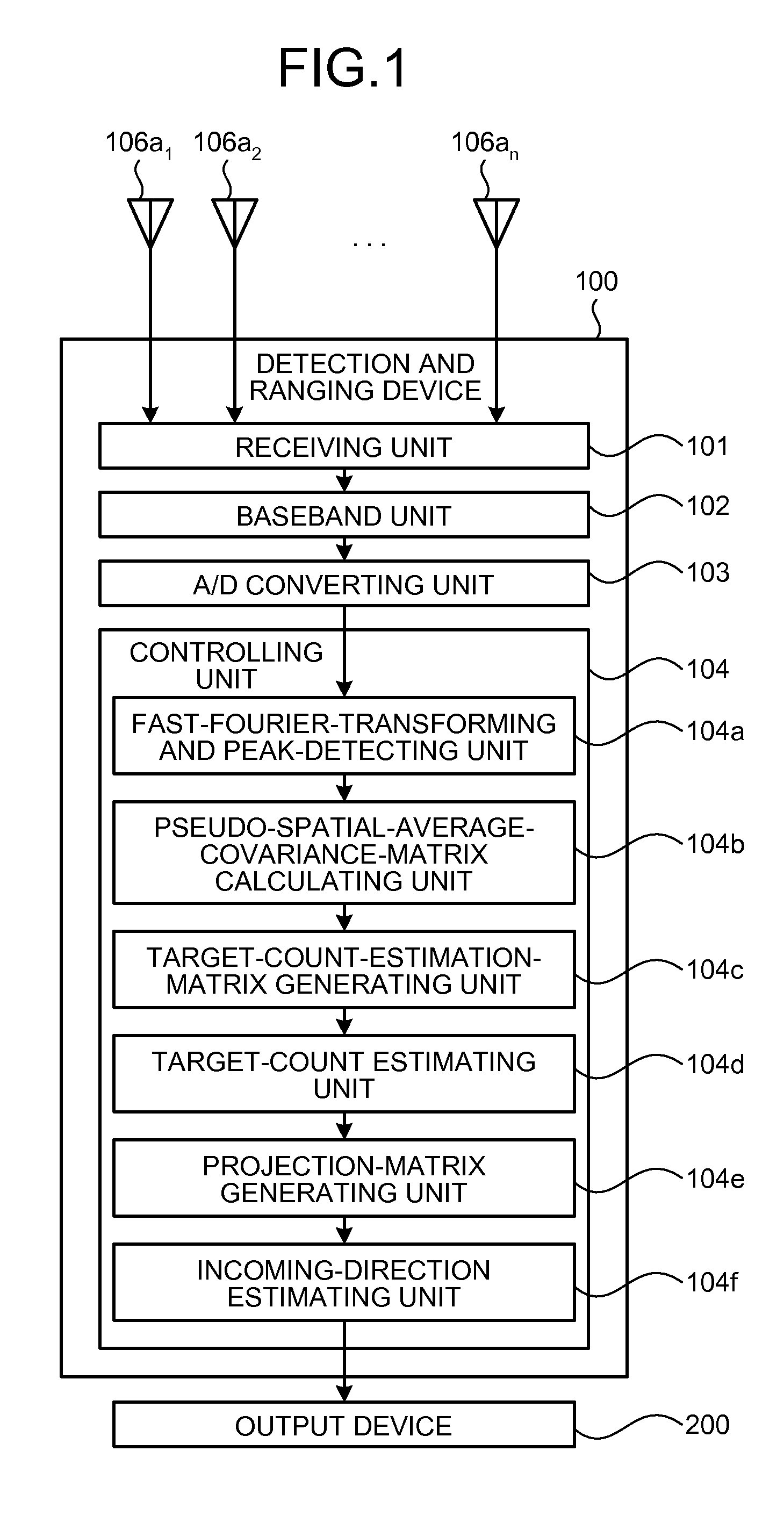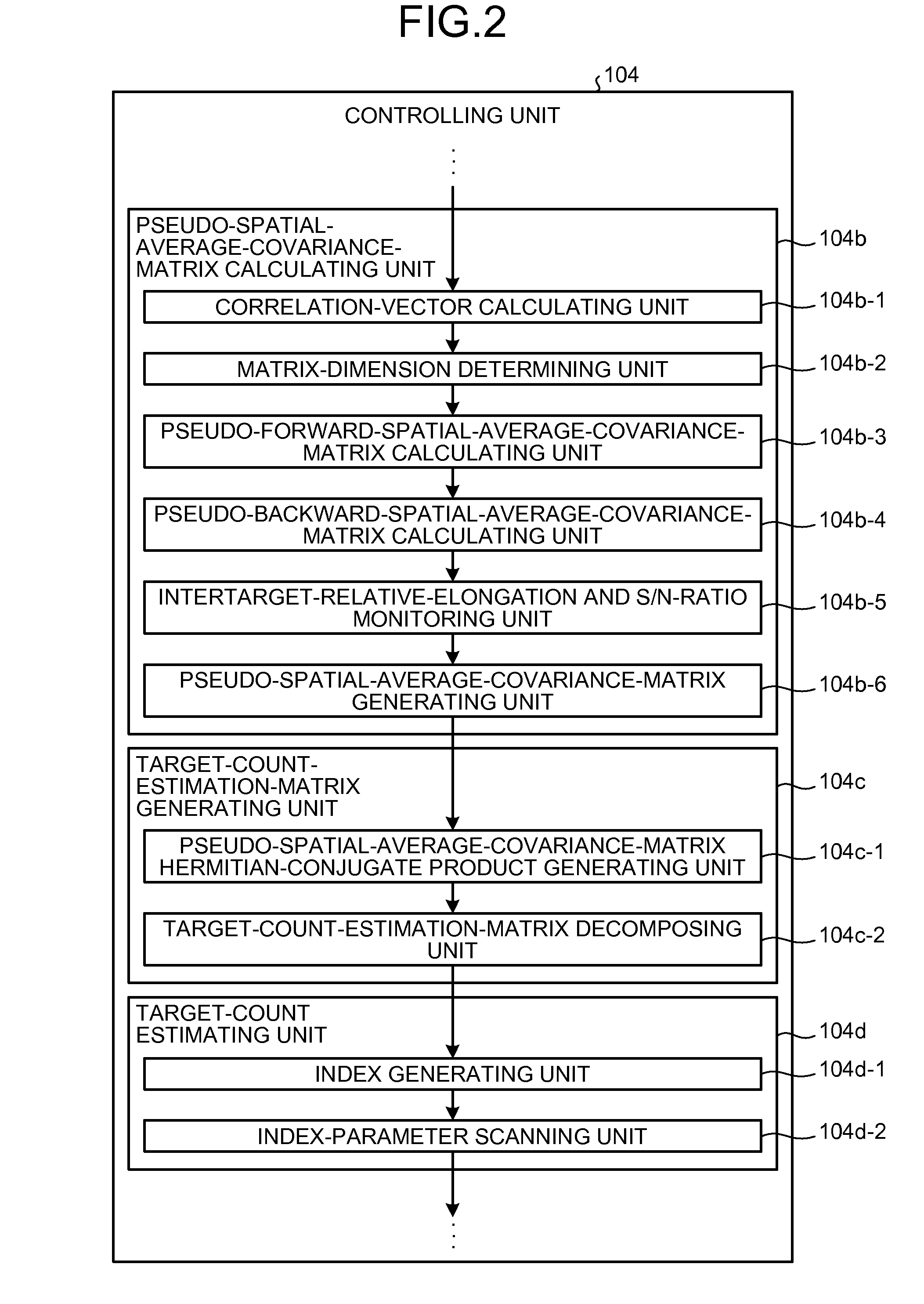Detection and ranging device and detection and ranging method
a detection and ranging device technology, applied in measurement devices, multi-channel direction-finding systems using radio waves, instruments, etc., can solve the problems of inability to perform, increase processing time and further increase calculation load, and low reliability of target-count estimation
- Summary
- Abstract
- Description
- Claims
- Application Information
AI Technical Summary
Problems solved by technology
Method used
Image
Examples
Embodiment Construction
[0056]With reference to the attached drawings, embodiments of the detection and ranging device and detection and ranging method according to the present invention are explained in detail below.
[0057]First, the configuration of the detection and ranging device according to an embodiment is explained. FIG. 1 is a functional block diagram of the configuration of the detection and ranging device according the embodiment. As depicted in FIG. 1, a detection and ranging device 100 according to the embodiment includes the sensor elements 106a1 to 106an equally spaced apart from each other so that a distance between adjacent sensor elements is d, a receiving unit 101 connected to the sensor elements 106a1 to 106an, a baseband unit 102, an analog / digital (A / D) converting unit 103, and a controlling unit 104.
[0058]The controlling unit 104 includes a fast-Fourier-transforming and peak-detecting unit 104a, a pseudo-spatial-average-covariance-matrix calculating unit 104b, a target-count-estimatio...
PUM
 Login to View More
Login to View More Abstract
Description
Claims
Application Information
 Login to View More
Login to View More - R&D
- Intellectual Property
- Life Sciences
- Materials
- Tech Scout
- Unparalleled Data Quality
- Higher Quality Content
- 60% Fewer Hallucinations
Browse by: Latest US Patents, China's latest patents, Technical Efficacy Thesaurus, Application Domain, Technology Topic, Popular Technical Reports.
© 2025 PatSnap. All rights reserved.Legal|Privacy policy|Modern Slavery Act Transparency Statement|Sitemap|About US| Contact US: help@patsnap.com



